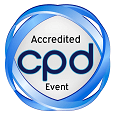Nepal C Dey
Research and Evaluation Division BRAC, Bangladesh
Title: Safety of food: hand washing with soap at rural households of Bangladesh
Biography
Biography: Nepal C Dey
Abstract
Personal hygiene and hand washing are two key factors in limiting the transfer of disease from known sources of contamination. Unwashed hands are considered the most significant pathway to pathogen transfer and food safety. Good hand washing technique is easy to learn and can significantly reduce the spread of infectious diseases. Hygiene education has been recognized as one of the most cost-effective intervention for disease prevention. Hygiene promotion has been remained at the core of BRAC Water, Sanitation and Hygiene (WASH) program since its inception. The Research and Evaluation Division conducted a number of studies to assess the effects of interventions and identified some challenging areas towards improved behaviors. The present study aims to understand the post-end line status of knowledge and self-reported practice of hand washing at some critical times. A longitudinal study design involving repeated responses in baseline (2007), midline (2009), end line (2011) and post-end line (2015) surveys of the same variable
was followed in the study area. Results show that knowledge on hand washing with soap before eating increased from 93% in baseline to 97.2% in end line and to 98.3% in post-end line. Use of soap in hand washing increased from baseline (6.6%) to the end line (20.7%) and post-end line (28.6%). Results revealed that increasing trend of respondents’ knowledge on hand washing with soap after defecation from baseline (90.3%) to end line (96.8%) and to post-end line (92.7%). But the practice of using soap after defecation increased from baseline (39.7%) to end line (64.5%) and to the post-end line (63.9%), which is much less than knowledge. A wide gap between knowledge and practice on using soap in hand washing was observed before eating, while the gap was reduced after defecation. Engagement of community people for periodic monitoring of hygiene behavior and ensuring access of safe water and soap
at households may increase hand washing behavior and thus safety of food before eating.

